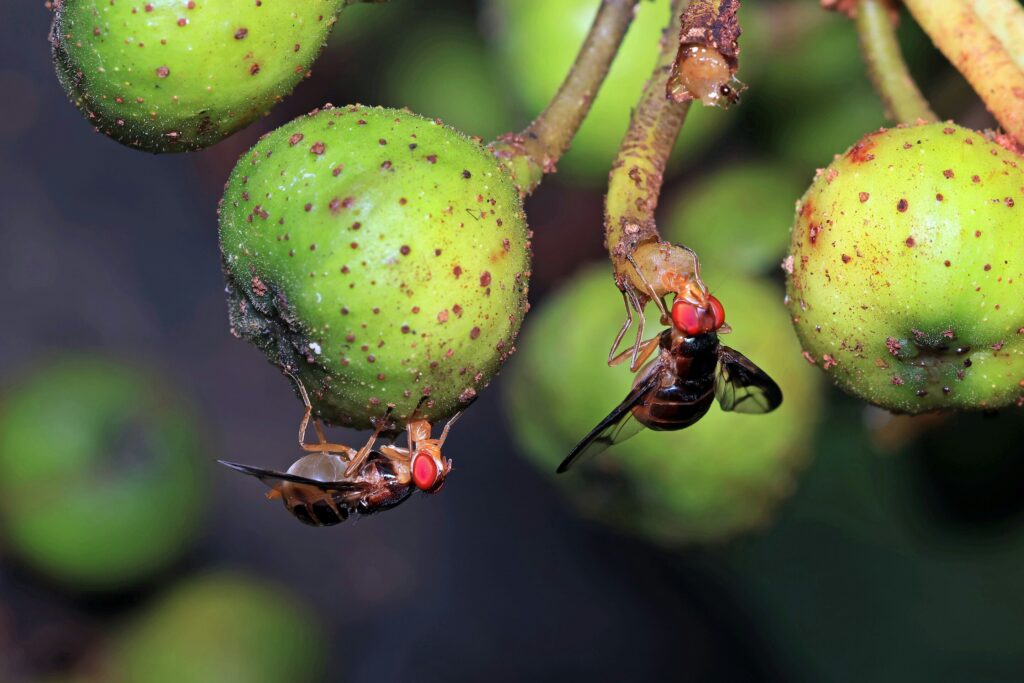
A commonly used agricultural fungicide, chlorothalonil, is under scrutiny after new research suggests it may be contributing to the alarming decline in insect populations, often referred to as the “insect apocalypse.” The study, led by Macquarie University and published in Royal Society Open Science, reveals that even minimal exposure to chlorothalonil significantly impacts the reproduction and survival of insects.
The research highlights the fungicide’s detrimental effects on Drosophila melanogaster, a species commonly known as the fruit fly. “Even the very lowest concentration has a huge impact on the reproduction of the flies that we tested,” stated lead author Darshika Dissawa, a Ph.D. candidate at Macquarie’s School of Natural Sciences. This discovery underscores the broader ecological consequences, as these insects play a crucial role in pollination and nutrient recycling.
Impact on Insect Populations
The findings have significant implications for ecosystems worldwide, where insect populations have reportedly plummeted by over 75% in recent decades. The study’s results indicate a 37% drop in egg production among fruit flies exposed to chlorothalonil, even at the lowest levels typically found on fruits and vegetables. This reduction in reproductive capability could have a cascading effect on insect populations and the broader food chain.
Associate Professor Fleur Ponton, who supervised the study, expressed surprise at the dramatic decline. “We expected the effect to increase far more gradually with higher amounts. But we found that even a very small amount can have a strong negative effect,” she explained. Such findings contribute to the mounting evidence of the widespread impact of agricultural chemicals on non-target insect species.
Chlorothalonil Usage and Regulation
Despite its ban in the European Union, chlorothalonil remains extensively used in Australia to combat fungal diseases in crops such as mildews and leaf blights. The fungicide has been detected in soil and water bodies near agricultural areas, raising concerns about its pervasive presence in the environment. “We need bees and flies and other beneficial insects for pollination, and we think this is an important problem for pollinator populations,” Ponton emphasized.
Chlorothalonil is particularly prevalent in orchards and vineyards, often applied as a preventative measure even in the absence of disease. This practice has led to unintended consequences for beneficial insects, with the study revealing severe reproductive damage in adult flies exposed during larval development. The research calls into question the assumption that fungicides only impact fungal diseases.
Broader Implications and Future Research
The study’s findings highlight a critical knowledge gap in pesticide regulation and the need for more sustainable agricultural practices. With fewer than 25 scientific papers examining the effects of chlorothalonil on insects, the research underscores the urgency of understanding its broader ecological impact. “People assume fungicide only affects fungal diseases, but it has an effect on other non-target organisms,” Ponton noted.
Researchers advocate for reduced frequency of fungicide applications to allow insect populations to recover between treatments. They also call for field trials to explore sustainable options and develop evidence-based guidelines to mitigate the knock-on effects of fungicides on beneficial insects. Future studies will investigate whether the reproductive damage carries over to subsequent generations and explore the combined effects of multiple agricultural chemicals used in farming operations.
As the global community grapples with the decline in insect populations, the study serves as a stark reminder of the interconnectedness of agricultural practices and ecosystem health. Addressing the challenges posed by chlorothalonil and similar chemicals will require concerted efforts from researchers, policymakers, and the agricultural industry to ensure the sustainability of both food production and biodiversity.







